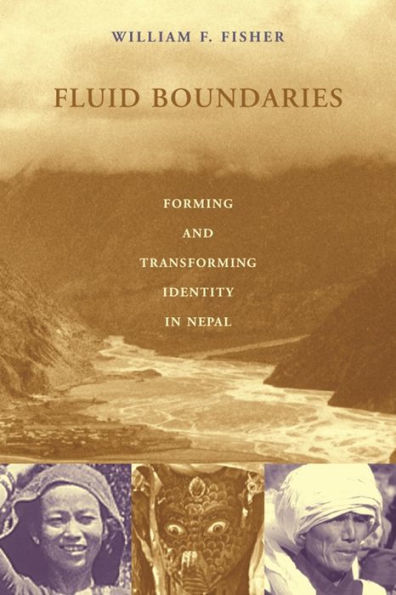Fluid Boundaries: Forming and Transforming Identity in Nepal
More than an ethnography, this book clarifies one of the most important current debates in anthropology: How should anthropologists regard culture, history, and the power process?
Since the 1980s, the Thakali of Nepal have searched for an identity and a clarification of their "true" culture and history in the wake of their rise to political power and achievement of economic success. Although united in this search, the Thakali are divided as to the answers that have been proposed: the "Hinduization" of religious practices, the promotion of Tibetan Buddhism, the revival of practices associated with the Thakali shamans, and secularization.
Ironically, the attempts by the Thakali to define their identity reveal that to return to tradition they must first re-create it—but this process of re-creation establishes it in a way in which it has never existed. To return to "tradition"—to become Thakali again—is, in a way, to become Thakali for the very first time.
1101422030
Since the 1980s, the Thakali of Nepal have searched for an identity and a clarification of their "true" culture and history in the wake of their rise to political power and achievement of economic success. Although united in this search, the Thakali are divided as to the answers that have been proposed: the "Hinduization" of religious practices, the promotion of Tibetan Buddhism, the revival of practices associated with the Thakali shamans, and secularization.
Ironically, the attempts by the Thakali to define their identity reveal that to return to tradition they must first re-create it—but this process of re-creation establishes it in a way in which it has never existed. To return to "tradition"—to become Thakali again—is, in a way, to become Thakali for the very first time.
Fluid Boundaries: Forming and Transforming Identity in Nepal
More than an ethnography, this book clarifies one of the most important current debates in anthropology: How should anthropologists regard culture, history, and the power process?
Since the 1980s, the Thakali of Nepal have searched for an identity and a clarification of their "true" culture and history in the wake of their rise to political power and achievement of economic success. Although united in this search, the Thakali are divided as to the answers that have been proposed: the "Hinduization" of religious practices, the promotion of Tibetan Buddhism, the revival of practices associated with the Thakali shamans, and secularization.
Ironically, the attempts by the Thakali to define their identity reveal that to return to tradition they must first re-create it—but this process of re-creation establishes it in a way in which it has never existed. To return to "tradition"—to become Thakali again—is, in a way, to become Thakali for the very first time.
Since the 1980s, the Thakali of Nepal have searched for an identity and a clarification of their "true" culture and history in the wake of their rise to political power and achievement of economic success. Although united in this search, the Thakali are divided as to the answers that have been proposed: the "Hinduization" of religious practices, the promotion of Tibetan Buddhism, the revival of practices associated with the Thakali shamans, and secularization.
Ironically, the attempts by the Thakali to define their identity reveal that to return to tradition they must first re-create it—but this process of re-creation establishes it in a way in which it has never existed. To return to "tradition"—to become Thakali again—is, in a way, to become Thakali for the very first time.
37.0
In Stock
5
1

Fluid Boundaries: Forming and Transforming Identity in Nepal
256
Fluid Boundaries: Forming and Transforming Identity in Nepal
256Paperback(New Edition)
$37.00
37.0
In Stock

Product Details
| ISBN-13: | 9780231110877 |
|---|---|
| Publisher: | Columbia University Press |
| Publication date: | 12/24/2001 |
| Edition description: | New Edition |
| Pages: | 256 |
| Product dimensions: | 6.00(w) x 9.00(h) x (d) |
| Lexile: | 1570L (what's this?) |
| Age Range: | 18 Years |
About the Author
From the B&N Reads Blog
